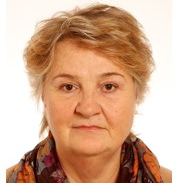Tissue Engineering Scaffolds in Regenerative Medicine
A special issue of Bioengineering (ISSN 2306-5354). This special issue belongs to the section "Regenerative Engineering".
Deadline for manuscript submissions: 20 June 2024 | Viewed by 5833
Special Issue Editors
Interests: biomaterials; biopolymers; biomimetic hydrogels; nanocomposites; tissue engineering
Interests: cell–material interaction; osteoblasts; epithelial cells; calcium signaling; cell adhesion; cell cycle and apoptosis; focal adhesions; cellular structures; physico-chemical characteristics of biomaterials; micro-topography
Special Issues, Collections and Topics in MDPI journals
Special Issue Information
Dear Colleagues,
The Fourth Industrial Revolution (4IR) is transforming health and healthcare system to become much more connected, precise, and democratized through medical and technological breakthroughs. Though great progress has been made in medicine over the years, however, current clinical approaches are not enough to meet a significant number of clinical disorders due to disease, trauma, congenital abnormalities, or ageing. For instance, everyday thousands of people of all ages across the world are admitted to hospitals because of the severe injuries or malfunction of some vital organs. Organ or tissue transplantation is a standard therapy to treat these patients. Irony of fact that many of these people will die due to the paucity of donor organs and high processing cost involved in organ transplantation. In this regard, tissue engineering and regenerative medicine (TERM) is a game-changing area of medicine with the potential to fully heal damaged tissues and organs and is promoting the move towards “cells as pills”. Tissue engineering scaffolds – that mimic the native extracellular matrix (ECM) - play a vital role in providing an environment that facilitates cellular growth, differentiation, and maturation. However, it’s still a critical engineering challenge to design clinically relevant scaffolds in a congenial and sustainable approach. Moreover, we know little how mechanical properties of the scaffolds regulate various cellular processes such as cell division, stem cell differentiation and cancer progression. In this special issue of Bioengineering on Tissue Engineering Scaffolds in Regenerative Medicine, we invite experts worldwide to submit contributions that provide novel findings in the field of scaffold-based tissue engineering and regenerative medicine. We welcome results from basic research, preclinical, or clinical research and reviews that highlight new findings on scaffold design for tissue regeneration and regenerative medicine, 3D printing of scaffolds, clinical translation of scaffolds, and mechanotransduction.
Dr. Kamol Dey
Prof. Dr. Barbara Nebe
Prof. Dr. Luciana Sartore
Guest Editors
Manuscript Submission Information
Manuscripts should be submitted online at www.mdpi.com by registering and logging in to this website. Once you are registered, click here to go to the submission form. Manuscripts can be submitted until the deadline. All submissions that pass pre-check are peer-reviewed. Accepted papers will be published continuously in the journal (as soon as accepted) and will be listed together on the special issue website. Research articles, review articles as well as short communications are invited. For planned papers, a title and short abstract (about 100 words) can be sent to the Editorial Office for announcement on this website.
Submitted manuscripts should not have been published previously, nor be under consideration for publication elsewhere (except conference proceedings papers). All manuscripts are thoroughly refereed through a single-blind peer-review process. A guide for authors and other relevant information for submission of manuscripts is available on the Instructions for Authors page. Bioengineering is an international peer-reviewed open access monthly journal published by MDPI.
Please visit the Instructions for Authors page before submitting a manuscript. The Article Processing Charge (APC) for publication in this open access journal is 2700 CHF (Swiss Francs). Submitted papers should be well formatted and use good English. Authors may use MDPI's English editing service prior to publication or during author revisions.
Keywords
- biomaterials
- scaffolds design
- tunable scaffold performance
- additive manufacturing
- physico-chemical modifications
- mechanotransduction
- chondrogenesis
- osteogenesis
- tissue engineering and regenerative medicine








